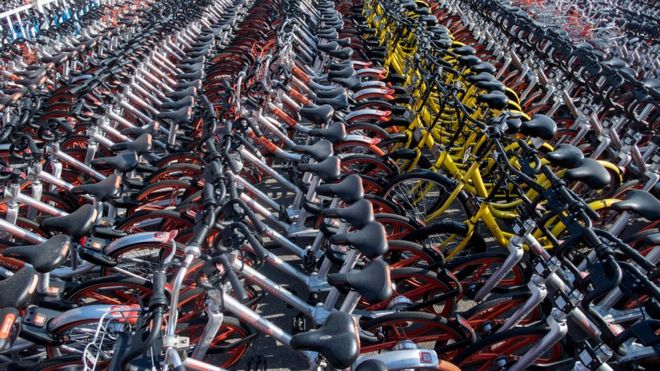Just over a year ago, I wrote that construction of a 6.5 kilometer bicycle expressway was to begin in September. It was designed to link the residential neighborhoods of Huilongguan in Beijing's Changping district with a rapidly-developing high-tech zone in the Haidan district, where about one in six Huilongguan residents work.
Well, that expressway has just opened. So why is it called an "expressway" instead of a "highway" or "lane"? Well, it actually does speed up the commute, which could take an hour and a half because several busy highways had to be crossed. The new Beijing bicycle expressway is elevated, so it crosses over those highways as well as other busy intersections. As a result, the trip can be done in 25 minutes when a cyclist rides at the 20kph (12.5mph) speed limit.
One really interesting feature of this new three-lane highway is traffic lights that allow managers to switch the direction of the center lane to accommodate traffic flow during the morning and evening rush hours.
Another stage of this bicycle highway is planned. When completed, it will reach Zhuongguancun, often referred to as China's Silicon Valley. Nearly one in five Huilongguan residents work there.
Could Beijing once again become the "Bicycle City" western tourists saw during the 1980s and 1990s?

Well, that expressway has just opened. So why is it called an "expressway" instead of a "highway" or "lane"? Well, it actually does speed up the commute, which could take an hour and a half because several busy highways had to be crossed. The new Beijing bicycle expressway is elevated, so it crosses over those highways as well as other busy intersections. As a result, the trip can be done in 25 minutes when a cyclist rides at the 20kph (12.5mph) speed limit.
One really interesting feature of this new three-lane highway is traffic lights that allow managers to switch the direction of the center lane to accommodate traffic flow during the morning and evening rush hours.
Another stage of this bicycle highway is planned. When completed, it will reach Zhuongguancun, often referred to as China's Silicon Valley. Nearly one in five Huilongguan residents work there.
Could Beijing once again become the "Bicycle City" western tourists saw during the 1980s and 1990s?



